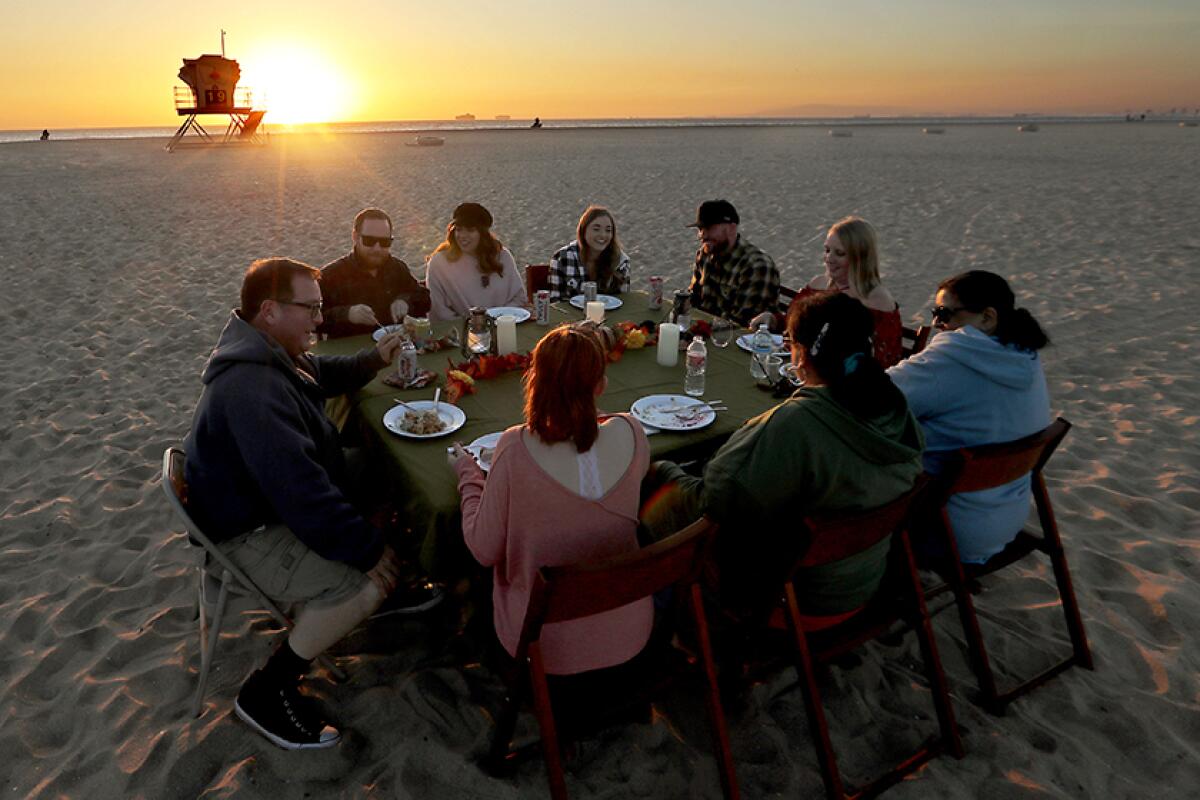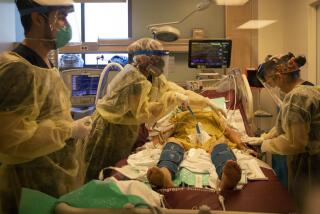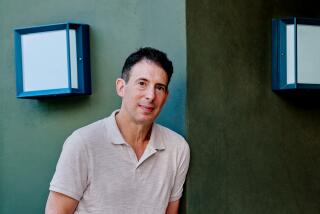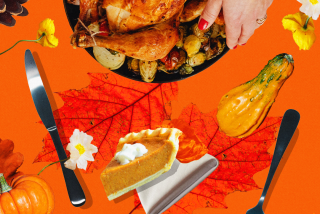After all the sacrifices in 2020, a little Thanksgiving joy in 2021

- Share via
A year and a half ago, I wrote about hugging in the age of COVID-19. My then-22-year-old daughter had come home to see the pandemic through with me. We went through elaborate rituals to keep safe, even from each other, since she’d taken a flight home. Among the rules: We didn’t hug or come within six feet of each other until the requisite 14 days had passed from her flight. And then we added a few days for good measure.
By that time, hugging felt like a long-unmet need — and a luxury at the same time. And though we now laugh at our naivete, thinking the pandemic storm would pass overhead in a month or two, we were eventually able to ease up a bit. I gave up wiping down the groceries and stopped constantly disinfecting surfaces with rubbing alcohol.
In those early days, I was startled each time characters on television, living in what they didn’t realize was pre-pandemic bliss, broke a rule of social distancing. What? People shaking hands? Going three minutes without sluicing their hands in sanitizing gel? Not worrying about where their next toilet paper sheet was coming from?
Some of the weirdest theories were floated and actually gained traction with the public: that walking along the beach might be unsafe because there could be live virus in the spray of the breakers or it could be risky following a runner because their exhalations might leave virus in their slipstream.
In the ensuing months, we mourned and we feared, but we also learned more about what was safe and what wasn’t, and most of us found ways to establish social connections in person. We could even celebrate together — carefully.
I experienced all of that, including personal bereavement. In August 2020, Marc, my older brother, not quite 72, died after a series of strokes and a simultaneous abdominal aneurysm that are believed to have been caused by a COVID-19 infection months earlier. In a sad coincidence, he was hospitalized with polio at the age of 5, before that vaccine was developed.
There was no funeral to attend, just relatives to cry with via FaceTime. More than 770,000 Americans have died of COVID-19. Many millions have been left mourning.
A month after Marc’s death, I was able to fly to Washington, D.C., to attend my son’s wedding. It was not the full-on affair we’d been planning in Southern California, but about 20 guests at a less formal picnic-type wedding at a Virginia winery.
As it turned out, that small, informal wedding, filled with the warmth of best-loved family and friends, felt better to me than the original plan. And the newlyweds were able to use the saved money toward the down payment for a house.
Last Thanksgiving, officials advised the nation that we could gather outside for small celebrations. Many of the conversations probably mentioned the vaccines just at the horizon. And just a few months later, millions of us were freed from the worst of our fears. With our arms jabbed and our masks on, we had dinner inside the homes of friends, and eventually made our way to museums and concerts.
For my youngest daughter, the safer conditions meant she could go back to grad school on campus this academic year. For my 6-year-old granddaughter, who spent most of kindergarten on her tablet, bored and disillusioned with school, it meant her first taste of a real classroom with art projects, a live teacher in the room and a playground with playmates.
Today is a good time to ask yourself: How much were you called on to sacrifice and what has the return of some normality meant for you and your family?
It’s easy to minimize in our thoughts the panic and constraints of those early weeks when so little was known about the virus and so little could be done besides hiding indoors. Now the cumulative change seems almost inconceivable. And that’s thanks to the researchers who slept in their labs as they worked uncountable hours to learn more about what was dangerous, and the scientists who wore themselves out developing safe and effective vaccines. It’s thanks to the millions of people who lined up for the vaccine and who wore their masks uncomplainingly and to the essential workers who risked their own health to provide medical care, food and other necessities.
Because of them, all of my kids and their nuclear families are in my home for Thanksgiving right now.
In some ways, this Thanksgiving probably bears a resemblance to the first one after the end of World War II. Following a long period that required major change in the way Americans lived and the worry that the enemy would win, there was gratitude in knowing that we had come through, even as we mourned the terrible loss.
The difference is that once the war was over, it was over. COVID-19 is a wilier enemy. Beating it back — even though we might never vanquish it — will require long-term vigilance and resilience. We Americans have done it before. We can do it again. And keep hugging.
More to Read
A cure for the common opinion
Get thought-provoking perspectives with our weekly newsletter.
You may occasionally receive promotional content from the Los Angeles Times.










